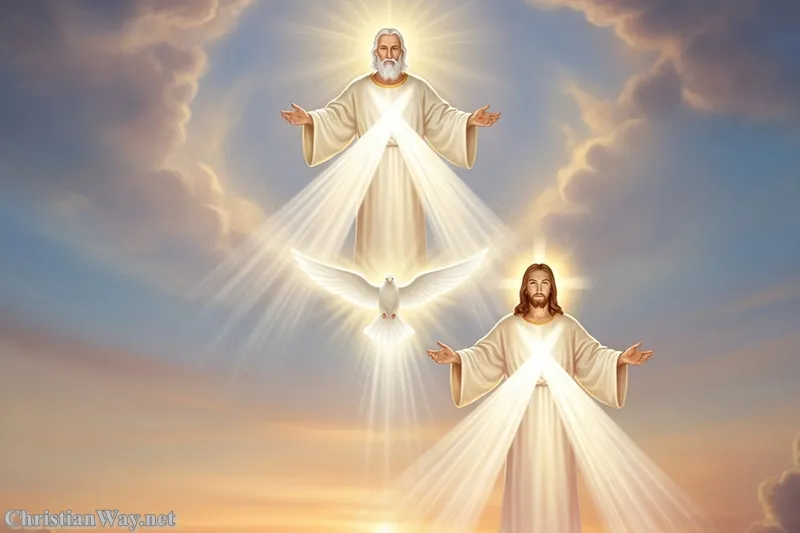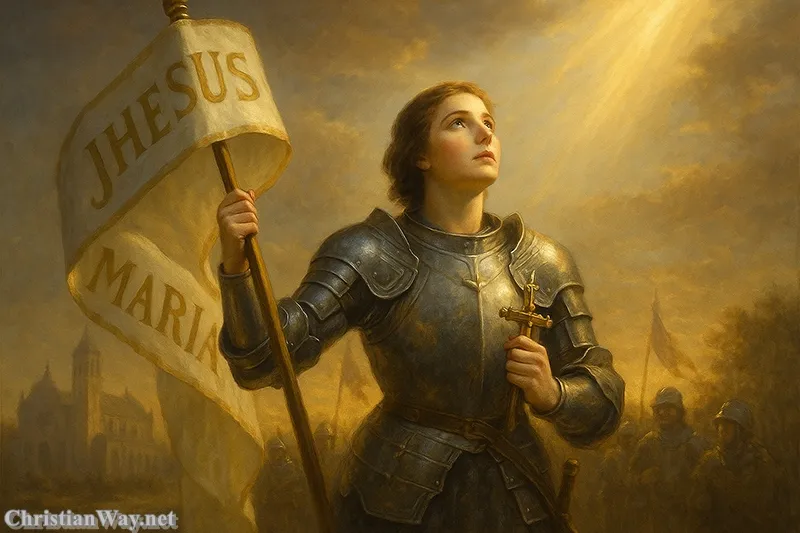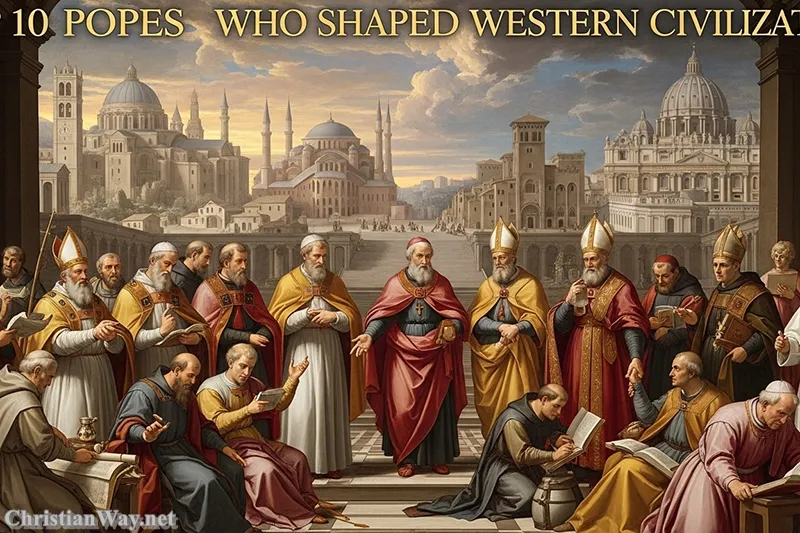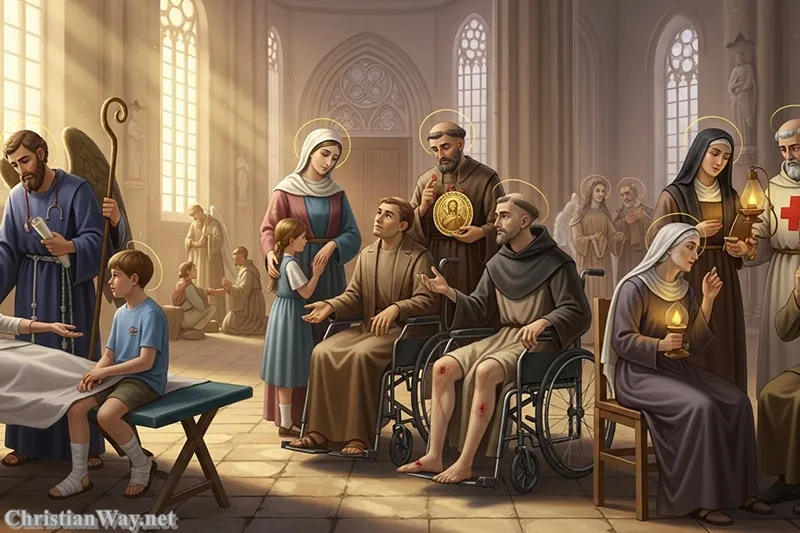Dear friends in Christ,
There are truths so vast, so luminous, that they do not fit neatly into the human mind but must instead be received by the heart in reverence and awe. The mystery of the Holy Trinity—that God is One in essence and Three in Persons: Father, Son, and Holy Spirit—stands at the very center of the Christian faith. It is not a puzzle to be solved but a mystery to be adored, a truth revealed not by philosophy or speculation, but by God Himself in love.
Every Christian prayer begins and ends in the Trinity. Every sacrament flows from the Trinity. Every heartbeat of divine grace, every movement of salvation history, originates in the inner life of this divine communion. When we say “In the name of the Father, and of the Son, and of the Holy Spirit,” we do not merely utter sacred words; we enter into the eternal relationship of love that is God Himself.

The doctrine of the Trinity is not an abstract theological idea—it is the revelation of Who God truly is. And to understand even a glimpse of it is to touch the mystery of love itself, for God’s very being is love (1 John 4:8).
The One God Revealed in Three Persons
The Catholic Church professes, in complete unity with the ancient Creeds, that there is one God who eternally exists in three distinct Persons: the Father, the Son, and the Holy Spirit. Each Person is fully and truly God, not parts or modes, not different aspects or phases—but distinct Persons sharing the same divine essence, equal in glory and majesty.
This truth was revealed gradually in Scripture: glimpsed in the Old Testament, made explicit in the New. At the baptism of Jesus in the Jordan (Matthew 3:16–17), we behold the Father’s voice, the Son in the water, and the Spirit descending as a dove—three Persons acting in one perfect harmony. Later, before His Ascension, Christ commands His disciples to baptize “in the name of the Father, and of the Son, and of the Holy Spirit” (Matthew 28:19). Notice: not names, but name—a single divine identity revealed in three Persons.
The early Church Fathers, guided by the Spirit, articulated this revealed truth through prayer and reflection. St. Athanasius, defender of the faith against Arianism, proclaimed:
“We worship one God in Trinity, and Trinity in Unity; neither confounding the Persons, nor dividing the substance.”
Thus, the Trinity is not a creation of the Church’s reasoning but the heart of revelation itself—a truth that discloses the very life of God.
The Father: Source of Life and Love
The Eternal Origin
In the mystery of the Trinity, the Father is the eternal source, “from whom all things come” (1 Corinthians 8:6). He is not “greater” in divinity, for all three Persons are equal, but He is the fountainhead of being—the unbegotten One, who begets the Son and from whom the Spirit proceeds.
In the Gospels, Jesus reveals the Father as more than Creator—He is Abba, “Father,” intimate and loving. The Father’s love is not distant or abstract; it is deeply personal. He loves the world so profoundly that He “gave His only Son” (John 3:16).
The Father is the one who eternally loves, and His love overflows in the generation of the Son and the outpouring of the Holy Spirit. Thus, even before creation, God was never solitary—He was always a communion of love.
The Son: The Word Made Flesh
Begotten, Not Made
The Son, Jesus Christ, is “begotten of the Father before all ages,” as we proclaim in the Nicene Creed. “Through Him all things were made” (John 1:3). He is the Word (Logos) spoken eternally by the Father—a Word so perfect that He is a distinct Person, fully divine.
The Son reveals the Father to us: “Whoever has seen Me has seen the Father” (John 14:9). In the Incarnation, the eternal Word took on human flesh to redeem humanity. He became the bridge between heaven and earth, so that by sharing in our humanity, we might share in His divinity.
In His life, death, and resurrection, Jesus revealed the infinite love that flows from the heart of the Trinity. The cross is not simply a human tragedy—it is the Trinitarian act of love: the Father giving the Son, the Son offering Himself in obedience, and the Spirit uniting that sacrifice in divine power.
The Holy Spirit: The Gift of Divine Love
The Breath of God
The Holy Spirit is the Love between the Father and the Son—so real, so personal, that He is Himself the third Person of the Trinity. He is the divine breath that gives life, the fire that sanctifies, the peace that heals.
In Scripture, the Spirit is present from the beginning: “The Spirit of God was hovering over the waters” (Genesis 1:2). He speaks through the prophets, fills Mary with grace, descends upon Christ, and animates the Church at Pentecost.
In the Trinity, the Spirit is the one who proceeds from the Father and the Son (as the Catholic Creed professes, “Filioque”). This phrase, while sometimes debated in history, expresses the unity of divine love that binds Father and Son eternally. The Spirit is not an afterthought but the living Gift of their love poured into our hearts (Romans 5:5).
Wherever the Spirit is present, the love of God is active—creating, renewing, and sanctifying.
The Trinity in Scripture and Tradition
From Genesis to Revelation, the presence of the Trinity is woven like golden thread through the fabric of salvation history.
- In Genesis 1:26, God says, “Let us make man in our image,” hinting at divine plurality within unity.
- The Angel of the Lord, the mysterious figure in the Old Testament, often speaks with divine authority—a foreshadowing of the Word.
- The Wisdom of God in Proverbs 8 speaks as one who was “beside Him, rejoicing always.”
- At the Annunciation, the Father sends the angel, the Spirit overshadows Mary, and the Son is conceived in her womb.
- At Pentecost, the Father sends the promised Spirit through the glorified Son.
The Catechism of the Catholic Church (CCC 232–267) summarizes this beautifully:
“The mystery of the Most Holy Trinity is the central mystery of Christian faith and life. It is the mystery of God Himself.”
To know the Trinity, then, is to know God as He truly is—not distant, but relational; not abstract, but personal; not silent, but speaking through love.
The Trinity in the Life of the Church
The Catholic Church is, at her core, Trinitarian in structure and mission. Every sacrament, every prayer, every act of faith begins and ends in the name of the Trinity.
When we are baptized, we are baptized into the Trinity. When we celebrate the Eucharist, we participate in the eternal offering of the Son to the Father in the unity of the Spirit. When we pray, the Spirit moves within us to cry, “Abba, Father!” (Romans 8:15).
The Sign of the Cross, so familiar and simple, is a profound profession of Trinitarian faith. Every time a Christian traces the cross upon the body, we invoke the Trinity—marking ourselves with the very mystery of God’s being.
The Mass itself is a symphony of Trinitarian praise:
- The Father is addressed in prayer.
- The Son’s sacrifice is made present upon the altar.
- The Spirit transforms the bread and wine into the Body and Blood of Christ.
Thus, the Church’s entire life flows from and returns to the Trinity.
The Trinity and Human Life
If we are made in the image of God, and God is a Trinity of Persons in communion, then we are made for relationship and love. The mystery of the Trinity is not an abstract doctrine but the pattern of our existence.
To live as children of the Trinity means to love as the Trinity loves—to give oneself freely, to receive others with openness, and to dwell in unity.
In marriage, two persons become one in love, and from that love comes life—a human reflection of the Trinitarian pattern.
In the Church, the many become one Body, united in the Spirit.
In prayer, the human heart communes with the divine Persons, sharing in the eternal conversation of love.
When we forgive, when we serve, when we unite with others in peace—we live out the image of the Triune God within us.
The Mystery Beyond Words
No human language can fully capture what it means that God is One and Three. St. Augustine, after a lifetime of contemplation, wrote humbly in De Trinitate:
“If you have understood, then what you have understood is not God.”
And yet, the mystery invites us not to give up but to enter more deeply into love. The Trinity is not a formula to memorize but a reality to encounter—in prayer, in the sacraments, in the silence of the heart.
When we adore God, we are caught up into that eternal movement of love between the Father, Son, and Spirit. When we love another, we echo the inner life of the Trinity. The more we grow in charity, the more we reflect the very being of God.
The Trinity and Salvation
Salvation is, in its essence, a Trinitarian act. The Father sends the Son to redeem the world; the Son offers Himself upon the Cross; the Spirit applies that redemption to our hearts.
Each Person acts distinctly but inseparably. The Father’s mercy, the Son’s obedience, and the Spirit’s sanctifying presence all cooperate in one divine will.
Through baptism, we are drawn into this communion: we share in the Son’s relationship with the Father and receive the Spirit who makes us children of God. Thus, eternal life is nothing less than participation in the life of the Trinity—what Jesus describes when He prays:
“That they may all be one, as You, Father, are in Me and I in You, that they also may be in Us” (John 17:21).
Heaven itself is not merely eternal happiness; it is eternal communion with the Triune God.
The Trinity and the Christian Heart
To believe in the Trinity is to be invited into divine intimacy. God does not reveal Himself as an isolated being but as relationship, communion, and love.
When we pray the Glory Be—“Glory be to the Father, and to the Son, and to the Holy Spirit”—we are not just reciting a formula. We are giving glory to the living God who has drawn near to us, who created us, redeemed us, and now dwells within us.
Each time we love without counting the cost, forgive those who wrong us, or bring unity where there is division, we reflect the inner life of the Trinity at work in our souls.
Reflect and Pray
Dear brothers and sisters, the doctrine of the Holy Trinity stands as both the foundation and summit of Christian faith. It reveals not only who God is, but who we are meant to become: a people united in love, living in communion, and filled with the Spirit of peace.
Let us pray, then, to live more deeply in the light of this mystery—not to understand it perfectly, but to let it shape our hearts.
Prayer
Eternal Father, fountain of life and love,
through Your Son, our Redeemer,
and the Holy Spirit, the giver of life,
draw us ever deeper into Your divine communion.
May our lives mirror Your love,
our hearts reflect Your unity,
and our souls rest in Your peace.Through Christ our Lord. Amen.
May the blessing of the Father, the Son, and the Holy Spirit be upon you, now and forever.
— Fr. John Matthew, for Christian Way





